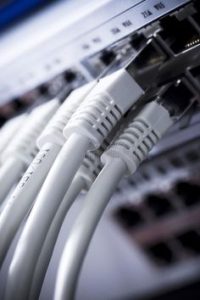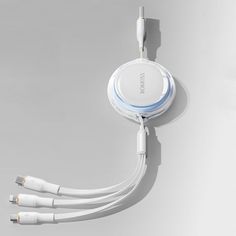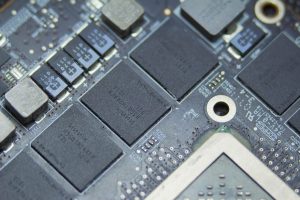If you’ve been working with PIWIS 2 (Porsche Diagnostic System) for your automotive needs, you’re probably aware that connecting it to a virtual machine (VM) requires the right cable interface. But, with so many different cables and interfaces out there, how do you choose the one that’s perfect for your setup? In this article, I’ll break down the technical details, types of interfaces, and everything you need to know to ensure seamless communication between PIWIS 2 and your virtual environment.
Why Choosing the Right Cable Interface Is Best for PIWIS 2 Virtual Machine Matters
When it comes to automotive diagnostic tools, using the correct cable interface for connecting PIWIS 2 to a virtual machine is crucial for ensuring reliable communication. Inaccurate or suboptimal connections can lead to data loss, slow performance, and, worst of all, diagnostic errors that can affect the functionality of your Porsche vehicle.
So, what exactly do you need to ensure optimal results with your virtualized PIWIS 2 setup? Let’s dive deeper into the different types of cable interfaces available, their features, and how to pick the best one for your needs.
You also may like to read this: How Are Modern Generative AI Systems Improving User Interaction?
Types of Cable Interfaces for PIWIS 2 Virtual Machine
There are several types of cable interfaces available for use with the PIWIS 2 system. Here’s a detailed breakdown:
1. USB to OBD II Cable
The USB to OBD II cable interface is one of the most common and widely used in the industry for connecting diagnostic tools to a vehicle’s OBD II port. This interface is compatible with most diagnostic software, including PIWIS 2, and is perfect for virtual machine setups due to its ease of use and straightforward connectivity.
Key Features:
- Simple plug-and-play setup.
- Reliable communication with the PIWIS 2 system.
- High-speed data transfer rate.
Pros:
- Cost-effective.
- Easy installation.
- Great for beginners and advanced users.
Cons:
- Some USB interfaces can have compatibility issues with specific virtual machine environments.
2. Ethernet Cable Interface
The Ethernet cable interface is another option for PIWIS 2 virtual machine connections. This type of interface allows for a network-based connection between your VM and the vehicle’s onboard diagnostic system, which is often faster and more stable than traditional USB connections.
Key Features:
- Stable, high-speed connection.
- Useful for larger or more complex virtual setups.
- Ideal for long-distance connections within a workshop.
Pros:
- Faster data transfer.
- Less prone to interference compared to USB.
- Ideal for high-traffic diagnostic environments.
Cons:
- Requires additional network setup and configuration.
- Can be more expensive than USB alternatives.
3. Bluetooth Diagnostic Interface
If you’re looking for flexibility, the Bluetooth diagnostic interface is an option that provides wireless connectivity between the PIWIS 2 system and your virtual machine. This eliminates the need for cables and provides a clean, clutter-free workspace.
Key Features:
- Wireless connectivity.
- Easy pairing with virtual machines.
- High mobility and convenience.
Pros:
- Great for mobile diagnostics.
- Reduces cable clutter.
- More flexible setup.
Cons:
- Can suffer from signal interference.
- Generally slower than wired connections.
Choosing the Right Interface for Your Virtual Machine
When selecting a cable interface for your PIWIS 2 virtual machine setup, it’s important to consider several factors:
- Performance Requirements: If you’re working on high-priority, complex diagnostics, an Ethernet cable interface may be your best choice. If you’re running basic tests or require portability, USB or Bluetooth might suffice.
- Compatibility: Ensure that the cable interface is compatible with both your virtual machine’s operating system and the PIWIS 2 software version.
- Installation Ease: Some interfaces are plug-and-play, while others may require additional drivers or software to work properly. Consider your level of expertise when choosing the interface.
Comparison Table: Cable Interfaces for PIWIS 2 Virtual Machine
| Feature | USB to OBD II | Ethernet Cable | Bluetooth Diagnostic Interface |
| Ease of Installation | Easy | Moderate | Easy |
| Data Transfer Speed | Moderate | High | Moderate |
| Compatibility with PIWIS 2 | High | High | Moderate |
| Distance from Vehicle | Short | Long | Moderate |
| Cost | Low | Moderate | High |
| Mobility | Low | Low | High |
Technical Specifications to Consider
Before committing to any specific cable interface for your PIWIS 2 virtual machine setup, you should consider the following specifications:
- Data Transfer Rate: Depending on the type of diagnostics you’re conducting, you may need faster data transfer. Ethernet connections typically offer the fastest speeds, followed by USB, with Bluetooth being the slowest.
- Compatibility with Vehicle Models: Make sure the cable interface is compatible with your specific Porsche model. Some vehicles require specific connectors or additional adapters.
- Software Version: Ensure that your cable interface is compatible with the version of PIWIS 2 you are using. Newer versions of PIWIS 2 may have additional requirements for the cable interface.
Pros and Cons of Cable Interfaces for PIWIS 2
USB to OBD II Cable
- Pros:
- Inexpensive and widely available.
- Simple to use with most systems.
- Cons:
- Can face connectivity issues in virtual environments.
- Limited range and slower speeds than Ethernet.
Ethernet Cable
- Pros:
- Very fast and stable.
- Ideal for complex, high-data-demand diagnostics.
- Cons:
- Requires additional setup.
- More expensive than USB options.
Bluetooth Diagnostic Interface
- Pros:
- Convenient, wireless option.
- Great for mobile diagnostics.
- Cons:
- Can suffer from connection issues and interference.
- Slower than wired options.
Recommendations
For a seamless PIWIS 2 virtual machine experience, I recommend using an Ethernet cable interface if you’re looking for speed and stability, especially for high-volume diagnostics. However, if you prioritize portability and ease of installation, a USB to OBD II cable might be the most cost-effective option.
If you are working in a mobile environment and need flexibility, the Bluetooth diagnostic interface is your best bet, although you’ll want to make sure your signal strength is sufficient for uninterrupted diagnostics.


















